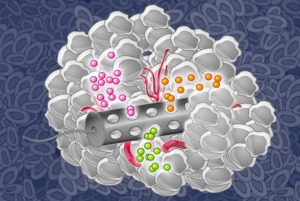por
Lauren Dubinsky, Senior Reporter | April 21, 2016
As precision medicine comes increasingly into focus, new innovations are emerging to ensure a customized approach to a variety of treatments. For cancer patients, one such product is a microdevice that can be implanted into a tumor to determine the best treatment option.
The microdevice works by delivering up to 100 individual cancer therapeutics or combinations into the tumor. After the tumor receives the therapies and analyses are performed, clinicians can identify the optimal treatment for that specific patient.
"We use a number of standard histopathology markers for measuring the effect of each of the drugs on the tumor. These makers can include any immunohistochemistry antibodies depending on how the drug acts," Oliver Jonas, a postdoctoral fellow who helped engineer the microdevice, told HCB News.



Ad Statistics
Times Displayed: 5354
Times Visited: 15 These online auctions feature Surplus Medical Equipment Extracted from Featuring A Variety of Medical Equipment & Consumables from A Bergen County, NJ Plastic Surgeon & Rensselear, NY BioTech Lab Location: 81 Hamburg Tpk, Riverdale, NJ 07457, US
There are currently about 150 cancer drugs that have been approved by the FDA. Many cancer patients have different drugs to choose from to treat their specific disease and patients respond differently to different drugs, said Jonas.
Jonas and his colleagues at the Massachusetts Institute of Technology (MIT) developed the microdevice to be less than a millimeter in diameter and about four millimeters in length. It has multiple reservoirs to hold single agents and combined therapies.
It's implanted into the patient's tumor with a small biopsy needle and kept there for about 24 hours. The microdevice is then removed, along with a layer of the surrounding tumor tissue and the tissue is evaluated to determine the effect that each drug or combination had on the tumor.
Last year, a study published in
Science Translational Medicine found that the microdevice can be implanted into mouse tumors.
When the microdevice was implanted in the mouse's tumor, the chemistry of the drugs was taken into account in order to avoid interference between the different drugs. They were separated into different reservoirs inside of the microdevice.
That study also found that 16 different therapies can be tested at the same time, but since then the researchers increased that number to 100. By doing that, they are now able to study the tumor at different time points while the microdevice is still in place with real-time imaging using optical fibers attached to each reservoir.
So far Jonas and his colleagues have tested the effects of many drugs in mouse models of melanoma, prostate cancer and breast cancer. The microdevice is helping them investigate the mechanisms behind drug resistance.
They have recently pioneered another study to test the safety and feasibility of implanting and removing the microdevice in patients with early-stage HER-2 positive or triple-negative breast cancer.
The preclinical research was presented at the American Association for Cancer Research annual meeting this week in New Orleans. This study was funded by the National Institutes of Health and the Koch Institute Frontier Research Program.

